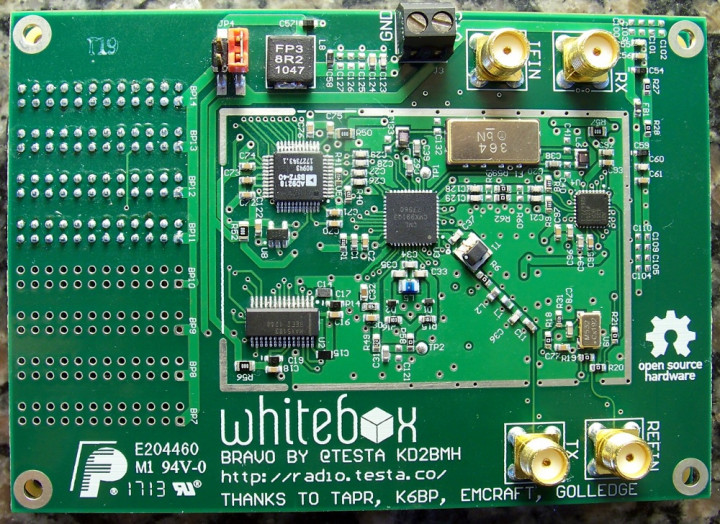UMD Graduate Chris Testa Develops Independent, Open Source Transmission Framework
Chris Testa, class of 2007, has a few problems with the state of the Internet. “The wires of the Internet are […] chokepoints,” he says [to me over a video conference]. “Once [they] have the wires of the Internet, they can gain control.” To Testa, 'they' is the NSA, Verizon, or any other group capable of doing unsavory things with our data – whether it be censorship, bandwidth restriction, or indiscriminate surveillance. Whitebox, therefore, is a response to these dangers: an open source, open hardware, wireless-framework-meets-radio rolled into one big challenge against the domination of physical connections as the conduits for information.
As Chris explains it, the advent of the Whitebox was a largely spontaneous affair. After graduating from Maryland Testa spent four years moving between prestigious companies and startups, including Google, YouTube, and Adly. “At the end of it, I was pretty much burned out,” he says, “so I decided to quit all of it and see what I wanted to do.” This was in 2011, around the time of SOPA and PIPA. Watching the Internet react to the possibility of stifling regulation and censorship, Testa drew a parallel between his own experiences with cellphones while backpacking and the centralized state of communications. “I wanted to understand [the limits of the infrastructure] and run a more democratized Internet,” he says. “That's the main motivator behind [Whitebox].”
But what exactly is Whitebox? From a technical standpoint, Testa's project falls into the category of Software Defined Radio, or “SDR”. In comparison to 'normal' hardware defined radios, SDRs implement the vast majority of their functionality in code, minimizing their reliance on custom chips for signal processing and filtering. SDRs have been technologically feasible since the 1970s and commercially available since the 1980s, but their production and licensing has generally been a closed affair. Top names in the SDR world closely guard their intellectual property, making it difficult to find an affordable SDR with both an open software stack and hardware devoid of proprietary firmware or chips. Open source projects like GNU Radio and HPSDR attempt to bridge the gap, but generally fail to provide the usability and abstract communication layer that non-technical users need.
Whitebox, which uses GNU Radio and an ARM microprocessor running Linux, should not be mistaken for another low-level implementation. Where other SDRs and frameworks tend to rely on a hodgepodge of components and programs knitted together by the expertise of the user, Whitebox advertises itself as a “stand-alone” system – no computer or peripherals required. In addition, unlike its predecessors in the field, Testa wants Whitebox to be used for everyday communication. “I think that it's possible for us to have free text messaging all over the world,” Testa says. “The reason we don't is because there's a lot of money to be made off of the subscriptions for it.” The technology is certainly there, with modern shortwave transmitters capable of sending messages over hundreds of miles with just a few watts of power. Though limited in bandwidth when compared to high-frequency cellular and wireless bands, the shortwave band is widely open to everyday citizens and more than capable of transmitting the messages Testa envisions.
Overall, Whitebox opens up the world of SDR (and shortwave radio, in particular) to everyday citizens unhappy with the state of global communication. Equipped with a battery pack, Testa's Whitebox can broadcast messages on a wide range of frequencies out of the box, subverting an infrastructure whose openness has repeatedly been threatened by the actions of governments and large corporations. With the importance of network freedom becoming increasingly tangible to techies and normal Internet users alike, there has never been a better time for people around the world to adopt Whitebox and its ilk as real replacements for the increasingly fragile physical networks of today.
A summary of the Whitebox's hardware and SDK can be found on Testa's website, and the source code can be found on Github.
The Department welcomes comments, suggestions and corrections. Send email to editor [-at-] cs [dot] umd [dot] edu.
